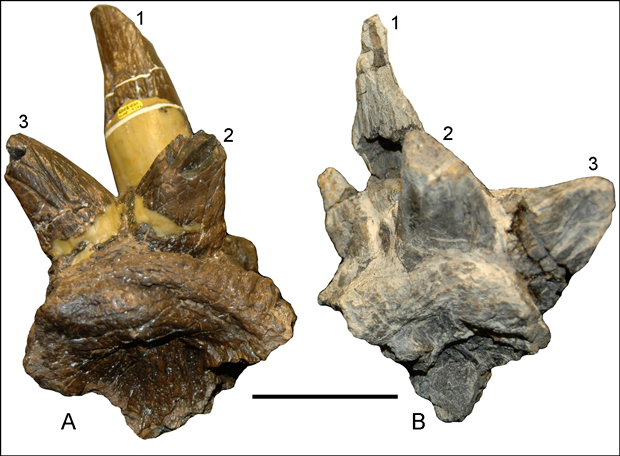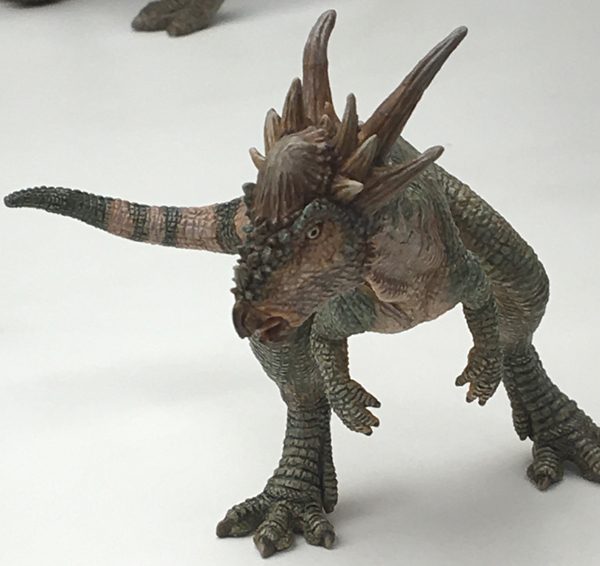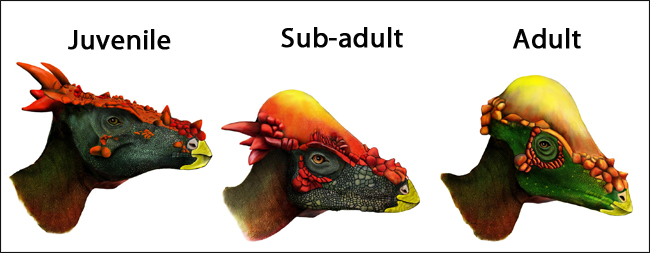Pachycephalosaur Squamosals – Examining Research Papers
Pachycephalosaur Squamosals
As Everything Dinosaur team members prepare for the arrival of the new for 2020 Papo Stygimoloch dinosaur model, team members have been examining the scientific papers that led to the erection of this pachycephalosaur genus (Peter Galton and Hans-Dieter Sues in 1983).
An isolated fossil bone referred to as a left squamosal (a bone from the back part of the skull) was found in Hell Creek Formation deposits located in McCone County, eastern Montana. This fossil bone was given the catalogue number UCMP 119433 and although its prominent horns and raised bony bumps were very distinctive, it was not formerly described until 1983. This fossil bone became the holotype fossil for the new species of North American pachycephalosaur Stygimoloch spinifer.
Stygimoloch spinifer
Distinctive Squamosal Bones Attributed to S. spinifer

Picture credit: Horner and Goodwin (published in PLOS One)
The picture (above), shows the holotype left squamosal (UCMP 119433) alongside a right squamosal which also comes from the Hell Creek Formation of Montana (UCMP 131163). When first described, the flat-headed, narrow skull of Stygimoloch with its array of horns and bumps that were most prominent at the back of the skull, was thought to represent a different type of pachycephalosaur than the dome-skulled species such as Pachycephalosaurus wyomingensis.
Extremely Scrappy Fossil Remains
Stygimoloch had been described from extremely scrappy fossil remains. Although a more complete skull found in North Dakota was also assigned to this genus, Stygimoloch remained poorly known.
The New for 2020 Papo Stygimoloch Dinosaur Model

Picture credit: Everything Dinosaur
Stygimoloch spinifer is Probably a Subadult Pachycephalosaurus
A paper presented at the annual meeting of the Society of Vertebrate Paleontology in 2007 challenged the validity of the Stygimoloch taxon. Palaeontologists John (Jack) Horner of the Museum of the Rockies, Montana State University and Mark Goodwin of the Museum of Paleontology at the University of California, Berkeley published a paper in the on-line, peer reviewed journal PLOS One (2009), that proposed that both Dracorex hogwartsia and Stygimoloch spinifer represented younger individuals of the Pachycephalosaurus wyomingensis species.
More recent fossil discoveries from the Hell Creek Formation and further analysis of existing pachycephalosaur fossil material from North America supports the idea that Dracorex hogwartsia, Stygimoloch spinifer and Pachycephalosaurus wyomingensis are the same taxon.
Pachycephalosaur Ontogeny – Three Hell Creek Formation Taxa May Actually Represent Just One Taxon

Picture credit: Kari Scannella with additional annotation by Everything Dinosaur
When first described, (Galton and Sues), the suggested morphology of the skull of Stygimoloch (narrow and lacking a raised, thickened dome), led the researchers to propose that unlike other pachycephalosaurs Stygimoloch probably did not indulge in any head-butting behaviour.
To view the range of Papo figures in stock at Everything Dinosaur, including a Pachycephalosaurus figure (whilst stocks last): Papo Models and Figures.
The 2009 scientific paper: “Extreme Cranial Ontogeny in the Upper Cretaceous Dinosaur Pachycephalosaurus” by John R Horner and Mark B Goodwin published in PLOS One.
The Everything Dinosaur website: Everything Dinosaur.

